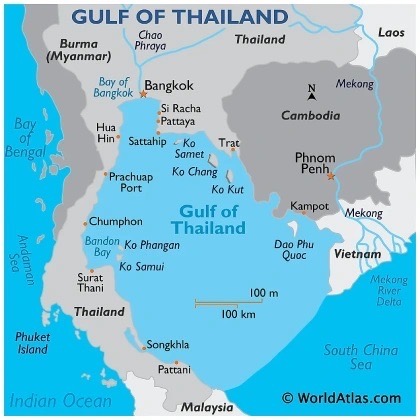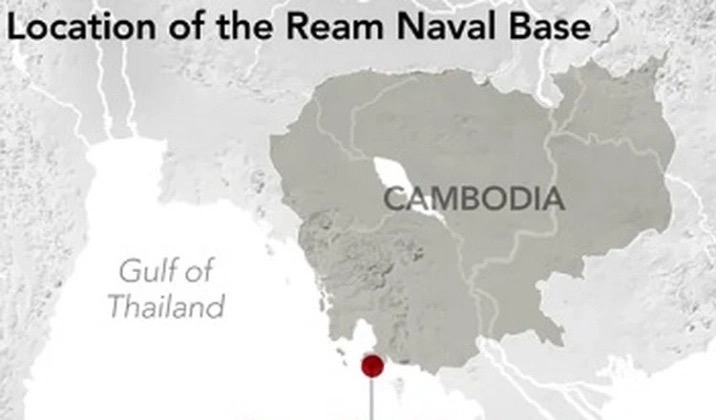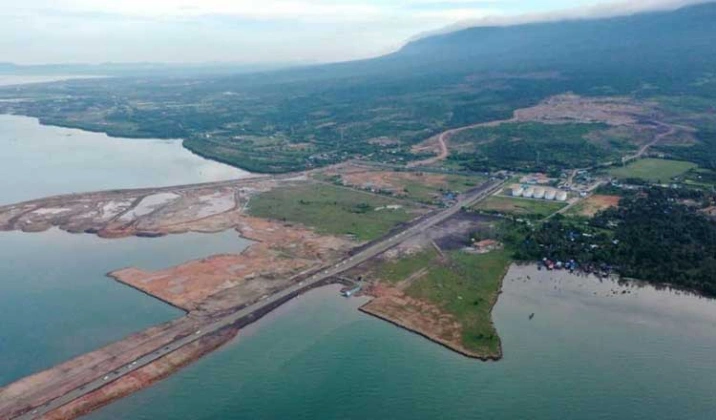With Cambodia as the spur, Beijing is consolidating its hold in the Gulf of Thailand, which can become the gateway for Chinese ships to enter the Indian Ocean.
China’s state-run news agency Xinhua reported that China Harbour Engineering Company Ltd. (CHEC) secured a contract from a Cambodian firm last week to construct a multi-purpose seaport in southwestern Cambodia’s Kampot province.
The Kampot deep water port is in southern Cambodia on the eastern edge of the Gulf of Thailand.
The contract was signed between CHEC-Cambodia office’s managing director Lan Qiuli and Meas Thom, president of Kampot Logistics and Port Company. The Cambodian Minister of Public Works and Transport Sun Chanthol was also present.
The 600-hectare Kampot Logistics and Port project began in May last year, with the Shanghai Construction Group and the China Road and Bridge Corporation also being the contractors.
The Cambodian minister said the 15-year project has an estimated cost 1.5 billion U.S. dollars, and the construction has been divided into three phases. The first phase from 2022 to 2025 is expected to cost 200 million dollars, he said.
The 15-metre deep water Kampot port will be able to accommodate vessels weighing up to 100,000 tons and capable of handling 300,000 twenty-foot equivalent units (TEUs) in 2025 and up to 600,000 TEUs in 2030, Xinhua reported.
“This mega project includes a container terminal, a special economic zone, a free trade area, a logistics hub, an oil refinery and a terminal for tourist vessels, among others,” the Cambodian minister said.
He was quoted as saying that the port in Kampot province will be the third largest port after the Sihanoukville Autonomous Port in the coastal city of Sihanoukville and the freshwater Phnom Penh Autonomous Port in capital Phnom Penh.

By building the port, China would be bolstering its profile in the Gulf of Thailand, which is separated from the Indian Ocean by a section of the Malay Peninsula in the west and the Indo-China peninsula in the east.
The Chinese are upgrading and modernizing infrastructure at the port of Ream in Cambodia. It includes a new command centre, meeting and dining halls as well as medical outposts. A dry dock, slipway, and two new piers will also be constructed. China will also undertake dredging to prepare the port for hosting larger vessels, presumably naval warships.

In the past the Chinese have also shown interest in the Kra canal which, if constructed, can link the Gulf of Thailand with the Andaman Sea.
The Thai Canal (previously known as the Kra Canal) refers to a proposed 135-km canal across southern Thailand that would connect the Gulf of Thailand with the Andaman Sea.
China has long envisaged constructing the 135-kilometre canal across the Kra Isthmus. Keen to avoid the Malacca strait, which the Americans dominate, China hopes to channel some of its shipping through the canal. Besides, by channelling energy tankers through the Kra canal, the Chinese hope to reduce transit costs by nearly 80 per cent.
(This article appeared first on indianarrative.com)





